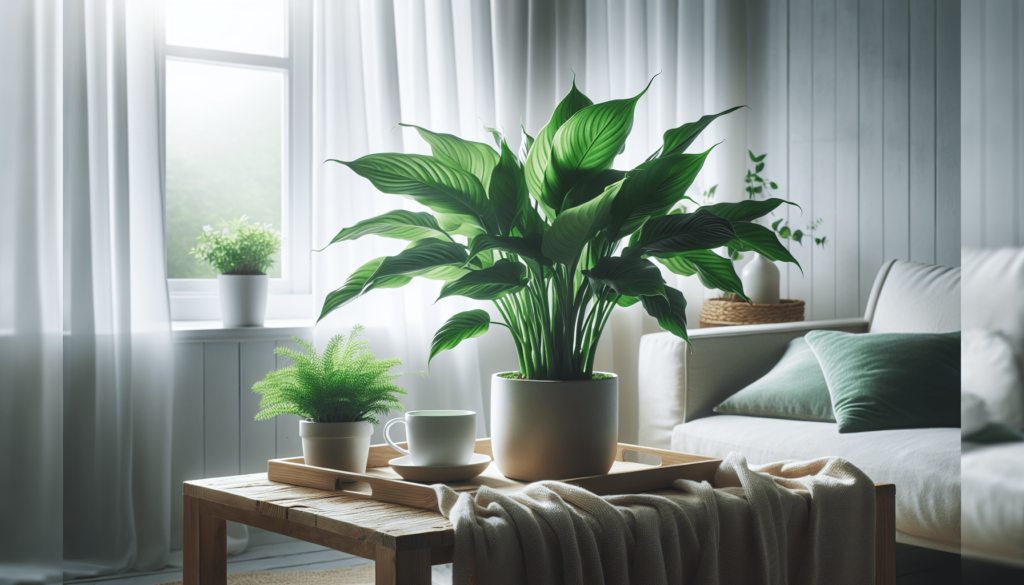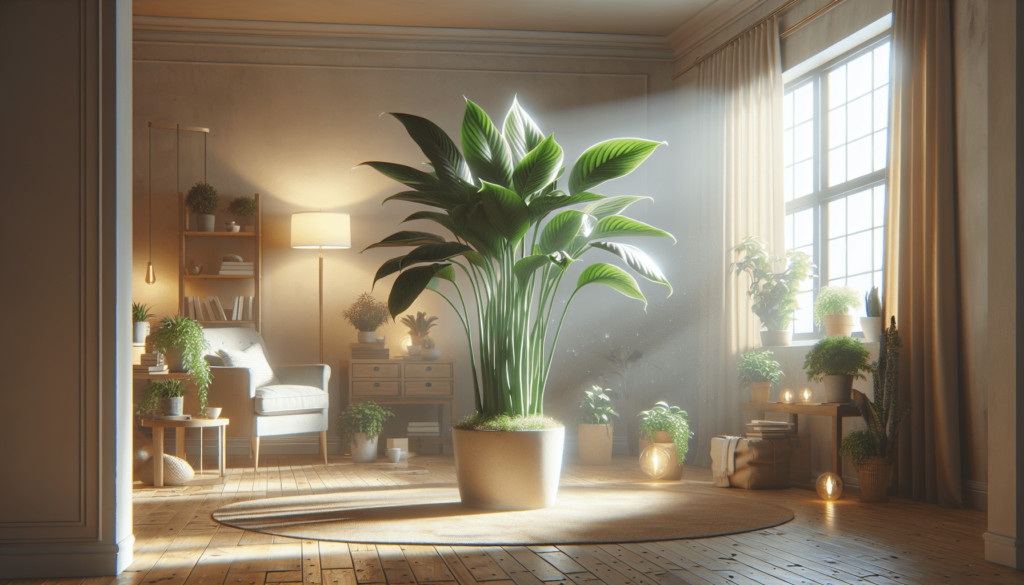Have you been sneezing your way through the seasons, longing for the comfort of fresh, clean air without stepping outdoors? If you find yourself in constant battle with seasonal allergies, it’s time to turn your home into a sanctuary with indoor plants. Interestingly, certain plants don’t just add a touch of green to your decor; they can actively filter out allergens and improve the air quality in your home.
Understanding Seasonal Allergies
What Causes Seasonal Allergies?
Seasonal allergies are primarily caused by pollen from trees, grasses, and weeds that release tiny grains to fertilize plants of the same species. People with pollen allergies—commonly called “hay fever” or “allergic rhinitis”—often endure a host of symptoms such as sneezing, nasal congestion, and itchy eyes. The severity of these symptoms can vary depending on the time of year and geographic location.
How Do Indoor Plants Help?
You might be wondering how indoor plants can provide relief from your relentless seasonal allergies. Plants are nature’s air purifiers. They absorb harmful toxins through their leaves and roots, converting them into oxygen while simultaneously humidifying the air. This natural filtration process can drastically improve indoor air quality, making it easier to breathe and reducing the likelihood of allergy flare-ups.
Best Indoor Plants for Allergy Relief
Choosing the right indoor plants can make a world of difference for allergy sufferers. Below are some plants renowned for their hypoallergenic properties and air-purifying abilities.
Spider Plant (Chlorophytum comosum)
Spider plants are non-toxic and are excellent air purifiers. They efficiently remove common indoor air pollutants such as formaldehyde and xylene, making them ideal for allergy sufferers.
Care Tips:
- Light: Bright, indirect light
- Water: Keep soil slightly moist
- Temperature: 55–80°F (13–27°C)
Aloe Vera (Aloe barbadensis miller)
Aloe Vera is not just useful for skin ailments but also acts as a natural air purifier. It removes benzene and formaldehyde from the air, substances often found in cleaning products.
Care Tips:
- Light: Bright, indirect light
- Water: Water sparingly; allow the soil to dry out between waterings
- Temperature: 55–80°F (13–27°C)
Peace Lily (Spathiphyllum)
Peace lilies are known for their stunning white flowers and their ability to filter out various pollutants like mold spores. They are also efficient at maintaining higher humidity levels, which can be beneficial for those struggling with dry air.
Care Tips:
- Light: Low to medium indirect light
- Water: Keep soil consistently moist
- Temperature: 65–80°F (18–27°C)
Areca Palm (Dypsis lutescens)
Areca Palm is another great choice for those wanting to improve indoor air quality. It consistently ranks high for removing toxins and helps maintain humidity levels.
Care Tips:
- Light: Bright, indirect light
- Water: Keep soil moist during growing seasons, allow topsoil to dry between waterings in winter
- Temperature: 65–75°F (18–24°C)
Bamboo Palm (Chamaedorea seifrizii)
Bamboo Palms are effective at removing formaldehyde, benzene, and trichloroethylene from the air. They’re relatively easy to care for and can add a tropical touch to your home.
Care Tips:
- Light: Bright, indirect light
- Water: Keep soil moist but not soggy
- Temperature: 60–75°F (16–24°C)

Common Misconceptions
All Plants Cause Allergies
One big misconception is that all plants will worsen your allergies, but the truth is more nuanced. While it’s accurate that some plants with high pollen counts can trigger allergies, many varieties actually act as natural air purifiers, pulling toxins and allergens from the air.
Indoor Plants Attract Dust
While it is true that plants may collect dust, proper care and maintenance can minimize this issue. Regularly wiping down the leaves of your plants will not only keep them healthy but also ensure that they continue to work efficiently as natural air purifiers.
Care & Maintenance
General Care Tips
No matter which plants you choose, keeping them healthy ensures they will work effectively in your home. Here are some universal care tips:
- Watering: Water your plants appropriately. Overwatering or underwatering can harm the plants and reduce their effectiveness in purifying the air.
- Lighting: Ensure your plants receive the right amount of light. Too much or too little light can affect their growth.
- Cleaning: Keep the leaves dust-free by wiping them down with a damp cloth regularly.
- Temperature: Maintain a stable indoor temperature that suits the plants’ needs.
Specific Care Instructions Based on Plant Type
| Plant Type | Light Requirement | Watering Needs | Optimal Temperature |
|---|---|---|---|
| Spider Plant | Bright, Indirect | Keep soil slightly moist | 55–80°F (13–27°C) |
| Aloe Vera | Bright, Indirect | Sparingly; allow soil to dry out | 55–80°F (13–27°C) |
| Peace Lily | Low to Medium | Consistently moist soil | 65–80°F (18–27°C) |
| Areca Palm | Bright, Indirect | Moist during growing season | 65–75°F (18–24°C) |
| Bamboo Palm | Bright, Indirect | Keep soil moist but not soggy | 60–75°F (16–24°C) |

Expert Tips for Allergy Sufferers
Living with allergies involve more than just picking the right plants. Here’s how you can maximize the benefits of your green companions:
Regular Cleaning
Make a habit of dusting the leaves of your plants. Dust not only obstructs their ability to purify air but also contributes to the allergens present in your home. Use a soft, damp cloth to gently wipe down each leaf.
Rotate Plant Placement
To optimize air purification, rotate your plants around different rooms in your home. This ensures that each space benefits from the plants’ purifying properties.
Humidity Management
Certain plants like the Peace Lily help maintain higher humidity levels. This is particularly useful in dry environments. However, too much humidity can encourage mold growth, so be sure to balance it out.
Avoid Flowering Plants
Though beautiful, flowering plants can produce pollen, aggravating your allergies. Stick to the non-flowering varieties to avoid triggering allergic reactions.
Creating a Healthy Indoor Environment
Your home should be your sanctuary, free from the allergens that make life uncomfortable. Incorporating specific plants not only beautifies your living space but also serves as a natural remedy to improve air quality. Let’s explore more ways to keep your indoor environment healthy.
Ventilation
Good ventilation is key to maintaining healthy air quality. Ensure that your home is well-ventilated, allowing fresh air to circulate while keeping pollutants at bay.
Regular Cleaning and De-cluttering
Along with keeping your plants clean, regularly cleaning and de-cluttering your living space can make a big difference. Dust and allergens can accumulate on surfaces and in corners, so make it a habit to clean your home thoroughly.
Air Purifiers
Consider investing in an air purifier with a HEPA filter to complement the work of your indoor plants. These devices can capture a large number of particles, including pollen, pet dander, and dust mites.
Appropriate Flooring
Carpets can trap allergens, making it harder to maintain clean air. If possible, opt for hard flooring options like wood, tile, or linoleum, which are easier to clean and do not harbor allergens.
Use Non-toxic Cleaning Products
Many conventional cleaning products contain chemicals that contribute to indoor air pollution. Switching to non-toxic, eco-friendly cleaning supplies can help maintain a healthier environment.
Conclusion
Living with seasonal allergies can be challenging, but creating a healthier indoor environment can offer significant relief. By incorporating hypoallergenic indoor plants into your home, you can improve air quality and make your living space more comfortable.
In summary, plants like Spider Plant, Aloe Vera, Peace Lily, Areca Palm, and Bamboo Palm can serve as natural air purifiers. These plants not only help remove harmful toxins but also create a more humid environment, making it easier for you to breathe. Proper care and maintenance of these plants further enhance their effectiveness.
Maintaining a clean, well-ventilated home, using non-toxic cleaning products, and possibly incorporating an air purifier can also contribute to better air quality and reduced allergy symptoms. Taking these steps will make your home truly feel like a sanctuary, a place where you can breathe easy and live comfortably.
So, why not bring a little green into your home and experience the benefits for yourself? Not only will these plants enhance your space aesthetically, but they’ll also work tirelessly to keep the air clean and lessen the hardships that come with seasonal allergies. The path to relief might just begin with a potted plant on your windowsill.
